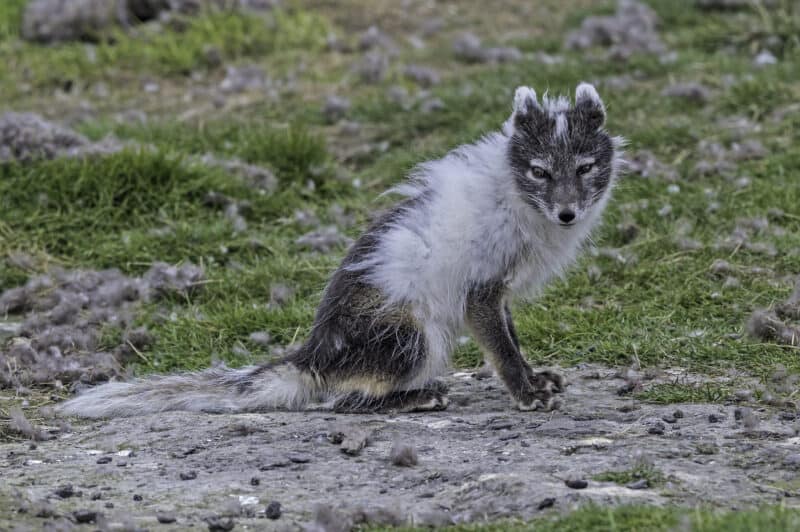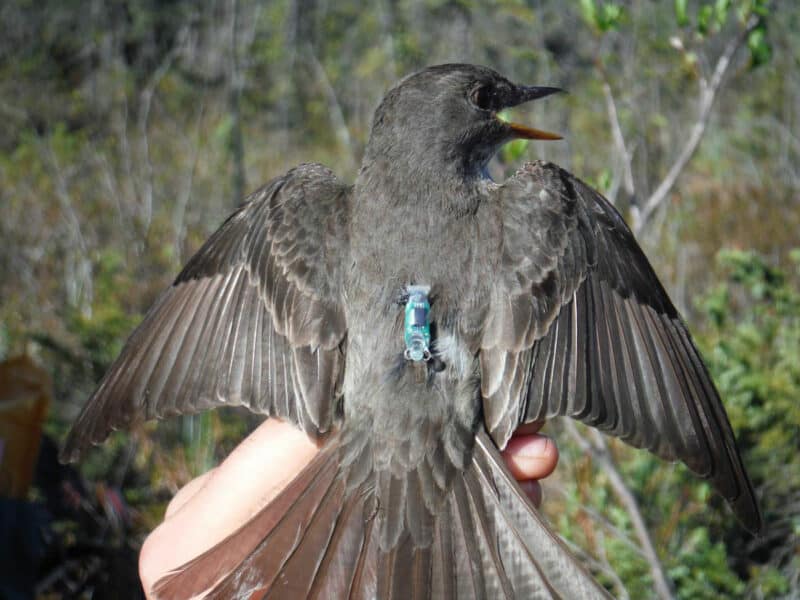How Climate Change Affects Animal Migration in the Arctic
Migratory animals rely on seasonal cues to time their movements. But what happens when these cues are no longer reliable? In the rapidly warming arctic, this question is becoming more and more pressing.
Climate change is affecting the polar regions of the planet faster than anywhere else. For eons, many animal species have migrated into and out of the arctic using once-predictable seasonal cues and conditions as a guide for where and when to move. How will the planet’s changing climate affect these cues, the animal movements, or even the animals themselves? Scientists are racing to study these questions right now.
In Tune With the Seasons
To many, the arctic environment conjures images of snow, ice, bleakness, harshness, and of course, frigid temperatures – not the sort of place where you would find an abundance of animal life, besides of course polar bears, seals and reindeer. But in reality, this is not the case, or at least not all the time. During the summer, the arctic regions of the planet become lush, green, and thriving places where animals flock to (literally in flocks), or swim to, and even run to, to breed.
Whether it be birds, mammals or fish, many species of animals have done this for thousands of years, and their senses have evolved to be innately tuned to the subtle changes in the short seasons in the north. They use these environmental cues as a guide, for when to begin their breeding cycles, where to make their nests, or have their calves, or for when to molt, before the short summer season ends and it is time to leave. For some little-studied species, scientists are still learning what these cues are, and how the animals know to do this.

Learning From Birds with Backpacks
The current state of knowledge of animal migrations to and from the arctic is on display in a new collection of articles in Animal Migration, written by leading experts in this field. This collection covers a wide range of research, from long-distance migrations of seagulls and songbirds, to novel observations of Greenland sharks, and summaries of overland routes taken by caribou. What is clear from these articles is that the changes in the arctic climate are either driving changes to animal migrations now, or they will soon be.
“Scientific understanding of animal migrations is leaping forward faster now than ever before.”
What is also clear is that scientific understanding of these migrations is leaping forward faster now than ever before, thanks to improved tracking technology. For example, researchers can capture wild songbirds in Alaska during the summer and outfit them with tiny backpack-style locating devices. If the scientists can capture the same bird again the next summer, they can download the GPS locations where the bird has been, and compile detailed migration maps. This approach is now demonstrating that these same birds travel over the entire North American continent each fall to reach winter destinations in sunny Central America. This is just one example of many.
Such discoveries bring a host of management challenges. From a conservation standpoint, how does one protect these animals that traverse such massive distances, and across multiple geopolitical boundaries? Can establishing protected zones in the animal’s breeding stage matter if their winter habitat in a far-away country is disrupted? Or if a habitat along their migration pathway is degraded, will they even reach their summer or winter destinations?

We are also learning that the warming climate is affecting migrants in different ways. Some bird species appear to have a degree of flexibility in their migration timing, but not necessarily in their flyway routes. Certain terrestrial or marine mammal species are shifting their breeding range distributions, and even the famous polar bears have been shifting more to land-based activity than on ice in recent years. Scientists are also aware though that other species may not be capable of transitioning or adapting as quickly, resulting in mismatches between their breeding activity, and when the peak food availability is.
Opportunities in Animal Migration Research
The science around animal migrations is indeed making great strides. However, researchers do point out that there are a range of important knowledge gaps and goals remaining in the field of arctic animal migration.
For example, there is a need for scientists to combine forces and assemble large databases of animal movement, for conducting large-scale, multi-species analyses. Improving physiological assessment techniques is another goal, for evaluating how migrants react to changes in the habitats, flyways, or environments. And finally, improving the logging capability and effectiveness of those tiny backpack transmitters will allow for a wider range of animal species to be monitored, as well as improve their accuracy.
From my perspective at the editor’s desk, helping to bring a new collection on arctic animal migration to life has been awe-inspiring. Each article paints a picture of an amazingly complex story of an animal or group of species, that are all so closely connected not only to the arctic, but also to other locations and regions around the world. And, these stories have been made possible by an equally awe-inspiring amount of effort by dedicated scientists. Thanks each of them for their contributions, and also, to Associate Editor, Emily Cornelius Ruhs, for spearheading this collection.
Learn more in the Special Issue
[Title image by Geoffrey Reynaud/iStock/Getty Images Plus
